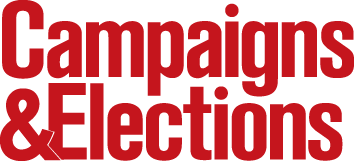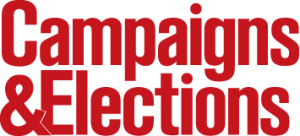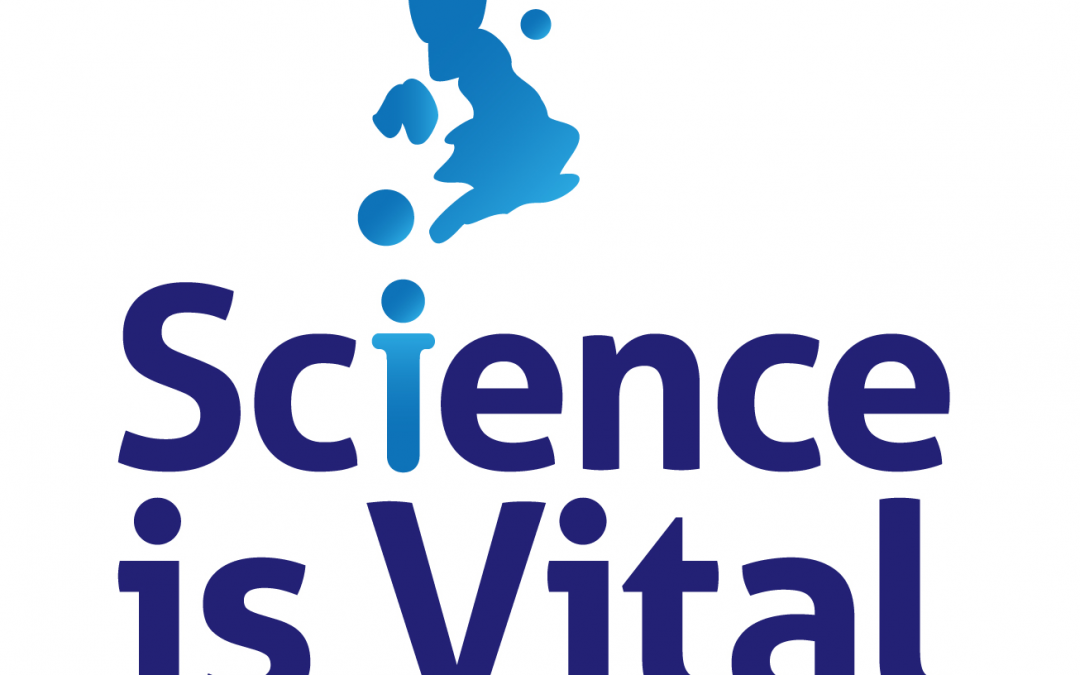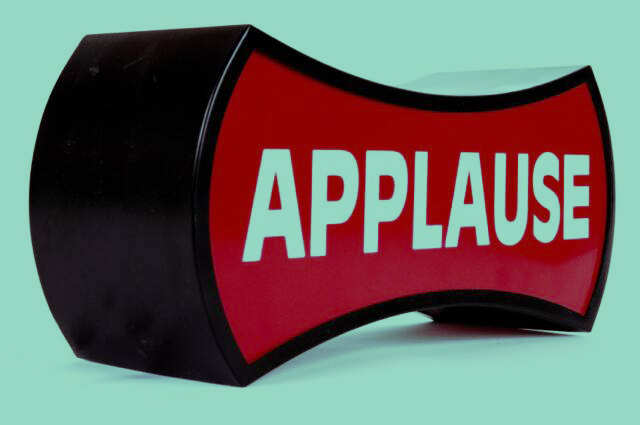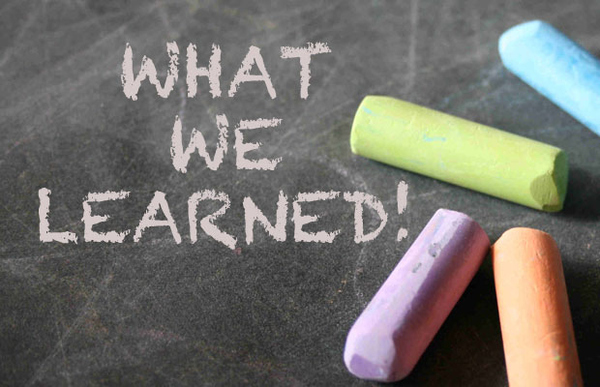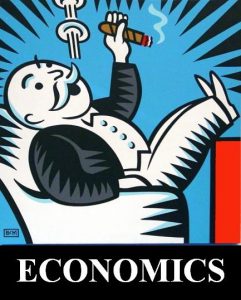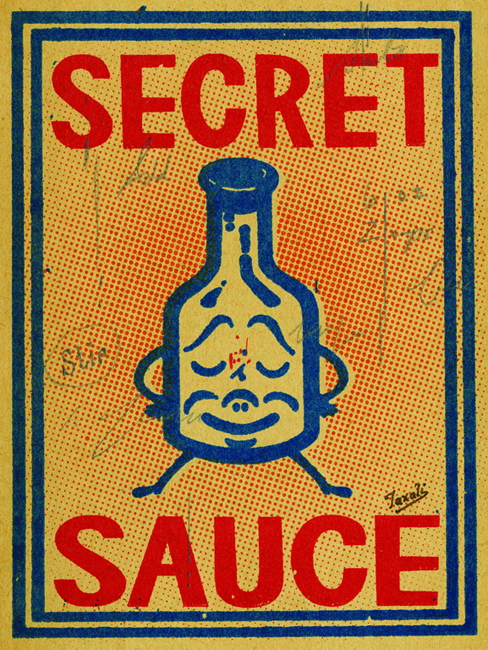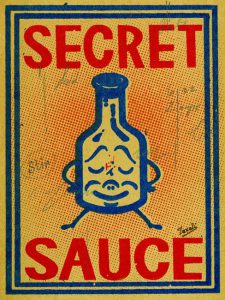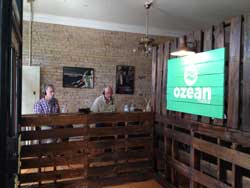
by Alex Patton | Sep 18, 2013 | Ozean Media, Political Consulting, Political Media, Political Research
Ozean was surprised and honored to be mentioned in Campaigns & Elections Magazine as one of their “Consulting blogs to bookmark”
Ozean Media Political Consulting Blog
Ozean Media itself is not exclusively a political consulting firm, but part of its focus is on Republican political campaigns. The firm devotes a section of its blog to political consulting, and frequently posts updates on topics relevant to the consulting world. Be sure to check out the Friday posts where the blog goes in search of a “Eureka” moment.


by Alex Patton | Sep 17, 2013 | Political Consulting, Political Media, Political Research
I must admit, I think I may be maturing or mellowing in my age.
The past year/18 months has been a period of intense study in an attempt to answer the question “How do people REALLY make decisions, especially political decisions?”
This has lead to a more intense reading period than I can remember even while in college. It has lead to books and scientific papers on behavior decision making theory, statistics, Bayes statistics, cognitive thinking, irrationality, biases, political branding, story telling, critical thinking tools, Neuromarketing and philosophy.
It has been a true meta-experience, and “Thinking about thinking” has lead to an incredible personal and professional journey. 
Distilled, here is what I am learning:
Our brains are complex, incredible and a big fat gigantic liar sitting atop our shoulders.
Essentially a synthesis of all the literature I have read is that we bump along life taking shortcuts that allow us to make sense of our world and unless we expend tremendous effort and are aware of our mental short cuts, we don’t do much heavy thinking. Even when we think that we are making a major decision, we are often making most decisions at a sub-conscience, affective, irrational level and then “confabulate” (my absolute new favorite word) a story in order to rationalize our decisions.
In fact, we have to force ourselves to do heavy thinking and even THEN, our brains still try and cheat and take short cuts.
For a very long time, I have been blissfully operating under my very own set of biases: personal and professional. Combine these biases and shortcuts with a healthy dose of ‘expertise’ and you had a person that did not deal well with ‘amateurs’ in the political field.
I was easily frustrated, dismissive, and impatient with others when it came to political and campaigning suggestions.
Then I spent a 18 months being humbled by science when you suddenly realize that the splinter in some amateur’s eye is completely blinding you to the log in your own eye.
The Change
I am attempting to personally commit myself to improving my decision making process and improving the way that I handle dissenting views proffered by others.
When you start treating your brain as benevolent well meaning liar, you approach things differently.
In all of the past 20 years, one question is helping me more than anything. The question? 
“What if THEY are RIGHT?”
This simple question forces me to break my thinking patterns, at least some of them.
By not dismissing someone who does not agree with you out of hand, you are entering into a new way of thinking about an issue.
Quick take inventory of your own biases, think about your decision process:
- Did you satisfy?
- Did you seek only confirmation? Did you only goto your favorite website and find the first article that agreed with you and send it out as definitive proof?
- Did you even consider a differing opinion?
- Did you consider that you could be wrong?
- What is the probability that you are wrong?
- What are your critical underlying assumptions?
The key is to slow the decision making process down.
Before rejecting the person’s thought, idea, or comment immediately out of hand, I quickly ask, “What if THEY are right?”
How did they come to their conclusion(s), what was their process, what is their information, what is their reasoning? All questions that pop into your head when you ask “What if they are right?”
Even with this effort, I still forget to ask it sometimes hence the hanging of the post its around my workspace.
I am attempting to use this with my clients, family, my friends, and my political opponents.
Honestly, it is a struggle, because it is hard and takes more mental energy than one realizes.
But, I am starting to see the rewards. It is making me more patient (a little) and I think it is helping me make better decisions.
I find myself less interested in being right and more interested in making the best decision possible, and I think this alone will serve my clients, my family and my friends better.
I still may not agree with the person, in fact considering your side of the issue may make me further entrenched in my position but that is a complete other blog post.
For now, let’s just say I am making the effort.
Final thought on Thinking about Thinking
Please, don’t take my word about any of this; after all, my brain could be lying to me. He’s kinda of a rascal like that.

by Alex Patton | Aug 20, 2013 | Political Media, Political Research

Rhetorical Design in Speech Making
Welcome to ‘science time’ with Ozean Media (Yes, it normally it is Science Friday, but I have recently become aware of NPR’s Science Friday so we must re-brand!)
While we re-brand, I came across some literature that I found interesting. We are embarking on a messaging discovery phase for a client, and I began to wonder what studies are out there on structure of messaging and the reception of those messages .
Basically, does rhetoric influence reception of the message?
This question lead me to Max Atkinson‘s research on the 7 rhetorical devices and the applause they generate. This lead me to a paper by John Heritage and David Greatbatch from the University of Warwick who used Atkinson’s research. This paper reviews Atkinson’s research and applies it to political speeches made in Britain.
It is an interesting read, and you can download the entire paper at the end of this post; however, in summary:
- 70% of the applause produced is associated with 7 rhetorical constructions.
- The relationship between the rhetoric and response is independent of party, status of speaker, and the popularity of the message.
- Performance Factors (the speaker’s actions) are found to influence the likelihood of generating a response strongly.
What the findings are showing is that audience responses to political speeches are influenced by the verbal structuring of the statements that are being made. Statements that use 1 of the 7 rhetorical devices were “between two and eight times as likely to be applauded as those who did not.”
In fact, the verbal structure had more to do with the applause and response generated than did the actual argument.
The 7 Rhetorical Devices to generate applause
1. Contrast – This is the Daddy Mack of devices, the mother sauce if you will. If you take away nothing else from this post, remember CONTRAST / ANTITHESIS. It has been used since the Greeks for a darn good reason: it works. Contrast works so well because the core assertion is said twice – in the negative and the positive – and the audience knows exactly when to react.
2. List, in three parts – This is the Daddy Mack, Jr. of devices. In the use of item1, item2, and item3, the “AND” signals to the audience the conclusion of the point and primes them for applause.
3. Puzzle-Solution – The speaker establishes a puzzle, and then provides the answer with the answer being the core message.
4. Headline-Punchline – Similar to Puzzle Solution, but more simple and less potential for elaboration (think soundbite).
5. Combination – combining all the devices above, with most combinations using contrast together with another device.
6. Position Taking – describes a state of affairs that the speaker is expected to take a strong stance with the description containing little to no overt evaluation. At the end, the speaker unequivocally praises or condemns the state of affairs.
7. Pursuit – When all fails, if an audience fails to respond, speakers may actively pursue applause by simply priming the message and then restating.
The Results of the Study of Rhetoric

As you can clearly see, contrast by far is the greatest deliver of applause – the mother sauce.
In summary, the study states about the table above:
Taken as a whole, table 5 provides impressive general support for the hypothesis that political messages that are packaged in rhetorical formats embodying emphasis and projectability are more likely to be applauded than messages that are not so packaged. The distribution of applause in association with the various formats described is generally stable regardless of political party and type of speaker. This conclusion is qualified only by a slight tendency for more practiced political speakers to gain a higher proportion of their applause from rhetorical devices than run-of-the-mill conference participants. These results suggest that there is a fundamental tendency for audiences to respond to political statements that employ the rhetorical devices and that experienced political speakers use them more often, or more appositely, or deliver them more effectively.
Additional Finding
As you may guess, the politician’s skill at delivering the speech greatly affects the outcome.
Something as simple as eye contact was greatly noticed. When a line failed to generate applause, the researchers were “struck by the repeated failure of many speaker to sustain eye contact with the audience when making significant points.”
Tucked into the study is the following conclusion: “while they (the audience) may have been able to recognize that a significant point was being made, were generally reluctant to respond to it in the absence of any additional signal from the speaker that the point was of real importance.”
Speakers can do this by the stress they place on their points, and speakers generate this defined stress in 5 main ways:
- gazing at the audience at or near the completion point of the message
- delivering the point more loudly than the surrounding speech passages
- delivering the point with great pitch or stress variation
- delivering the point with marked speeding up, slowing down, or some other rhythmic variation
- delivering the point accompanied by the use of gestures
Conclusion
While every politician or aspiring politician may not be able to hire a full time speechwriter, there is no excuse NOT to learn the basics.

It is clear, The mere way one structures & delivers an argument has a huge impact on the effectiveness of an argument.
Any politician would improve their stature not with long, boring litanies of facts, but rather with an understanding of how to construct an argument using these 7 rhetorical devices. Then one must practice, practice, practice delivering them.
OR
As my Mamma said, “Son, it is not what you say, but how you say it!”
Read the entire study: Generating Applause: A Study of Rhetoric and Response at Party Political Conferences

by Alex Patton | Jul 22, 2013 | Political Media
I am bummed. The failure of our attempt to save Talk of the Town kicked me right in the gut. We lost money, time, and ego, and if you know anything about me, you know that I don’t take losing easily. Losing hurts, and I admit upfront that I am a horrible loser.
I have spent my time reflecting constructively – riding my bike 100 miles, running over 10, and swimming over three in the past 5 days in an effort to process failure.
Like many “start ups” in the postmortem phase, one dissects the situation in an effort to learn from it, and I seem to do this best while exercising.
Here is what we have learned from the demise of Talk of the Town:
Where we failed
We were horribly under-capitalized for this endeavor. In fact, we were non-capitalized for this endeavor. Never do that again.
We were unable to attract commercial advertisers for the show. The advertisement package consisted of in-show reads & spots, website advertising, email newsletter advertising, and newspaper print advertising. Not one business bought in the time frame we needed. We realized that we would have to attract believers in the show willing to take this leap of faith with the show’s mission, and in the end we were unsuccessful.
The simple economics of the show:
Hard Costs
Equipment: $659.12
Internet: $125 month (we needed a robust upstream to broadcast the show)
Software: $1,000 in one time cost.
Software: $5,000 ($399 per month for streaming for 12 months) This was for third party streaming and mobile application licensing fees. Interesting Fact: Talk of the Town became Live365’s #12 ranked talk show in a matter of 6 weeks.
Board Operator: $10 per hour for 2.5 hours a day. 4/5 weeks per month $500/$625 for a month
Website hosting: $49-$65 per month depending on bandwidth used. Streaming requires more bandwidth than other websites.
Sales Commission: a percentage of sales & automobile mileage
In-kind Contributions:
Talent/Diva Fees: $600 to $750 per month depending on 4 or 5 weeks per month
Website development: $2,500 & $250 per month for maintenance and changes
Construction of Studio: approximate value: $5,000 of time of three people
Equipment: $1,500 (we were able to get some equip. donated from third parties)
Ozean Equipment & Expenses: $10,000 (Ozean’s existing computers, hardware, software, office, electricity, etc)
Bottom Line
We were on pace to raise about half of what we needed to cover just ongoing operating costs, let alone get to a level to compensate talent or upgrade equipment in order to move from a patchwork system to a more professional set up.

Things learned
Jake and Ward love this community – A LOT.
What many may not realize is that these two worked without compensation and even passed on other financial opportunities to continue the show. Not only that, but they cared so much that they were willing to take the slings and arrows that came with speaking out. They took the bullets so that the rest of us didn’t have to. When people talked of “toxic hate” radio (when they really meant the expression of a different opinion) they weren’t speaking of us. Ward and Jake stood there like men and took it all in order for our community to hear a different opinion.
Economic Models
Local advertisers have not embraced an Internet model of advertising. With limited advertisement dollars available, they choose to spend their money elsewhere. I think they are wrong, but I understand.
Competing Interests
Some didn’t like the Internet, digital model and were working on a plan to purchase a small radio station. When trying something new, it doesn’t help when supporters of the show implicitly signal they don’t believe in its form. But, I understand that is business.
We horribly overestimated people’s desire to financially support the show
This is the one I am most disappointed in myself for, because I know better. I spent years in fundraising for political campaigns at the Congressional level. I know the drill. “You have my support – call me.” Then we spend the next three weeks calling with no answer. DAMN IT, I know better than to trust people’s good intentions, but in my thrust to get the project off the ground, I ignored the voice.
Some on the extreme-right blackballed the show
Went there.
Some on the left blackballed the show
Yep, went there too. From Commissioner Bottcher requesting lists of advertisers to PIO officers warning businesses “not to tarnish their image”, there was a concentrated effort to kill the show.
It was me personally
Some people refused to be affiliated with the show financially because I personally was involved in the show. Shame, it is well known that I had my disagreements with the show – in fact we had some of them on the air. Yet, I realized the over-all good the show was doing, and I was willing to set aside any petty, lingering feelings to help save the voice of the loyal opposition. Shame others couldn’t do it.
Enterprise doesn’t run on appreciation – Or – There are hypocrites among us
Funny, the same people who called the show the most talking of their ‘deep appreciation for the show’ and lamenting the loudest about the show’s demise, never would be bothered to donate $15 per month. In fact, they wouldn’t donate a dime in any form – one time donation, monthly, etc.
In fact a vast majority of the donations received to keep Talk of the Town going were from small donors with limited means – THEIR $15 a month meant a lot.
I would rather someone had said honestly “This Internet stuff won’t work and I am not giving you a dime.” than call the show every other day talking about their appreciation and praising the wonder of Talk of the Town while sitting on their fat wallets.
People listen to Streaming Media
Funny, some of the same people that were the most adverse to the Internet streaming saying or emailing such silly things as “all my friends don’t use the Internet” were some of the most consistent listeners.
What to do differently
In retrospect, what I would have done differently was to advised Ward & Jake NOT to launch the show immediately. I would have advised a period where the show went dark, and we used this time to launch a “Save the Talk of the Town” campaign. We would have collected pledges and only when we raised $x would we have continued with the launch. In fact, Talk of the Town sounds like a perfect kickstarter project.
That process would have saved time, money and fleshed out the scoundrels earlier.
Talk of the Town Conclusion
In the end, while disappointed and a bit bruised by the failure, I am not bitter. I will get over it and move on (may take another 50 miles on the bike). We learned a lot from the experience and collected very interesting data about Internet streaming.
In the end, I hope the show or something similar to it is re-born, because as all political scientists & practitioners know “when the political elites agree with no countervailing opinion, consensus is assumed.”
And at this point, there is no one left to stand guard.

by Alex Patton | Jul 16, 2013 | Political Consulting, Political Media, Political Research
I am asked all the time, what makes a good candidate?
While we all know a great candidate can get beat when the political environment and/or district are not in his/her favor or at least even, we will set this aside.
We will just look at the simple question, “What makes a good/great candidate?”

The Secret Sauce
The ability to craft and tell a coherent story that emotionally connects with voters. There it is – that is the secret sauce.
While all political consultants are all excited about the latest scientific studies, big data, predictive analysis, and changes in media consumption, it still comes back to the basic building block of good ol’ fashion storytelling.
It begins with the Story
Before we write campaign plans, strategies, tactics, we need the story to tell.
When we first meet with a candidate, we ask them the basic question: “Please, why you are running?”
If the candidate tells me that they are going to run an “issue-orientated” campaign and proceeds to rattle off 10 issues with solutions and facts, we know that we have a ton of work to do or that we should focus on other candidates.
What we really want to hear is: “Thanks for asking Alex, you handsome devil, please allow me to tell you a story…..”
I dream to hear a candidate tell a story connecting with the values and emotions of most of the voters AND contains BOTH protagonists and antagonists.
 We need a story that defines who they are and what they stand for, and a critical element of the story is that it will be rejected by 20-30% of the voters.
We need a story that defines who they are and what they stand for, and a critical element of the story is that it will be rejected by 20-30% of the voters.
If they tell us a story that attempts to attract 100% of the vote and never offends anyone, we want out or a really weak field. Without conflict, there is no story! Yes, the tone is up for discussion, but we must have conflict.
The dream candidate? The dream candidate can make the difficult transition of constructing the story without themselves as the central character. However, in the beginning, we will just take a story, any story.
Why? This is not because I think it works.
It is science.
The Science of Story
Our brains need stories. In fact, our brains actively search for stories, and when our brains have difficulty, our brains will just make stuff up to fill in the gaps.
It appears from all the research, our feeble brains must have stories to construct neat, little packages so that we can retain & understand. It is why we have listened to and told stories since we were children, it is why Hollywood exists.
If I could, I would require the following reading list for candidates to include but not limited to:
- McKee, Robert. Story: Substance, Structure, Style, and the Principles of Screenwriting. HarperCollins Publishers, 1997.
- Mark, Margaret, and Carol S. Pearson. The Hero and the Outlaw: Building Extraordinary Brands Through the Power of Archetypes. New York: McGraw-Hill, 2001.
- Sachs, Jonah (2012-06-19). Winning the Story Wars: Why Those Who Tell (and Live) the Best Stories Will Rule the Future Harvard Business Review Press.
Summary of the Importance of Political Stories
I concede, it is probably asking too much to have candidates – especially first time candidates – approach campaigns with fully crafted stories.
However, instead of jumping right to numbers and strategies, political consultants need to spend more time upfront convincing our clients the importance of storytelling and then working with them developing their story.

by Alex Patton | Jun 5, 2013 | Ozean Media, Political Media

A good friend of mine made a comment that has stuck with me over the past few days “The Internet moves at the speed of Imagination!”
That statement remained with me over the past 3 days as we designed, built, and tested (I use those words VERY loosely) a complete broadcast studio in our office.
How it all began
There is a local radio station that featured a conservative radio talk show, Talk of the Town. The show was a live call in show broadcast M-F 11am – 1pm. As with a lot of media, there is a move towards consolidation and ownership changes. Last Friday, the ownership of the station changed, and as with any new owners, their vision for the station differed from hosting a local, call in talk show. On Friday, the station changed its format to High Energy Dance music bringing a little Jersey Shore to our local town.
At the same time, our single local paper announced they were putting up a digital pay-wall for their news content. Again, their right to do so.
Immediately upon hearing of the cancellation of the talk show, Ozean approached the show hosts with an idea:
In this media chaos, there is an opportunity. We can create a digital station that will focus on hyper-local coverage and build an online community around it. And yes, we can have you back on the air by Monday.
The scramble begins
A secret? As with many things on the Internet, we had no budget and no specific idea how to actually do this. We knew it could be done, but the how….
We just remained focused on producing the Minimum Viable Product – we wanted a live broadcast with live call ins with the ability for people to listen in a web portal or mobile app. Piece of cake, right?
Here is a rough timeline with the snags we worked through (some of the details may be fuzzy due to sleep deprivation….)
FRIDAY
Step 1) Find a third party partner who could accept our live stream and push it to pre-made mobile apps. This is the critical piece.
SNAG: The provider is located in California with one sales person who was telling me that they couldn’t have me on by Monday (it was too technically challenging and we would most likely crash and burn.) I politely insisted he take my credit card and take my money. The sales man finally relented, and I stopped at a Starbucks and executed the contract online. In a triage situation, this was the airway.
Step 2) Build out a quick website. Cobbled a quick website together using WordPress. It is not the prettiest site nor is it totally built out, but not bad for 5 hours and 2am in the morning. Alachuatalks.com
Step 3) Cobble together software to broadcast and test connection. Tested multiple software packages and vendors.
SNAG: Our chosen provider’s software works only works on a PC. DARN IT everything is set up to go through a Mac. Spending about 3 hours on forums and google searches, we find an alternative piece of software, download trial and configure.
SNAG: For the life of me, could not get a connection made. I suspected that I was not opening a firewall port correctly. Called in reinforcements. A network expert, Stafford Jones, and he remotely dialed into our computer and diagnosed issue and fixed it. We were now connected to a test server.
Step 4) Build out additional web pages and functions. Install analytics at 9 pm. Post a couple social media posts about the show pointing to the new site. I am embarrassed of the sites appearance. Real time results show there is interest in the new website. Encouraging. Pass out.
Step 5) Wake up an hour later – forgot to place a place to capture email addresses on the site. Set up Mailchimp list, build widget, insert crudely into the website making it even more ugly. Sleep again.
SATURDAY
Step 6) New equipment. We needed new mics, a mixer, a way to digitize, connectors to get it all into a computer and broadcast.
SNAG: Of course we could find all the equipment we needed online, but we needed it Saturday, not in 2 -days shipping time. Asked a friend if he had a spare mixer laying around? He did! Then looked in a spare closet for old equipment we already owned that may work. Found a piece that MAY WORK! Drove to a local music store (Lipham Music) and told them what I was attempting to do. They shared their expertise and we cobbled a system together. True, it is not optimal, but it MAY work.
Step 7) Opening, plugging in and testing. Started cobbling together all this different equipment from different eras, praying it all somehow worked.
SNAG: My daughter has a dance recital on Sunday, and because I am going for the dad of the year award, we had Daddy Daughter dance rehearsal on Saturday 9am.
Step 8) Returned from dance recital practice and test cobbled together mics and returns.
SNAG: Mics are working, Returns are not working. Set this aside until later and make note to call my friend who owns the mixer so that he can help me. (He later looks at a photo of the mixer online and tells me what knobs to turn. BOOM! Working!)
Step 9) Ability to take call ins.
SNAG: We have a VOIP system in our office and I didn’t want to use my regular business phone for a call in number. When attempting to purchase a new number and configure our Asterisk server to route the number to a phone, I suddenly remembered that we have a phone number with our internet provider that we never use. We don’t even have a phone line attached to it.
SNAG: Because, we only have VOIP phones, I don’t know if that phone line works. We need a cheap $9 phone and an old analog phone cord.
SNAG: We need a specialized piece of equipment that can splice in phone calls and allow the hosts to interact with the caller. Called my network friend, Satfford, again. We agree to work on it on Sunday.
SUNDAY

Cobbled together studio
Step 10) Major Issue: Solve the call-in problem.
SNAG: Daughter’s dance recital is today – this means Dress rehearsal at 1:55pm and recital at 6pm. Put call-in issue off for now.
Step 11) Test mobile connection. Call one of the hosts, walk him through install of mobile app and test broadcast on his I-phone. BOOM! He downloaded mobile app and could hear me broadcasting. Partial success. (didn’t mention the call in issue)
Step 12) Dress rehearsal. Pick up daughter, head to Performing Arts Center for a 15 minutes rehearsal. Take her home head back to office.
Step 13) Meet gracious friend, Stafford Jones, at the office. Plug in cheap phone. DIAL TONE. Now, how do we get this to work with the other stuff? Our first set up got the audio from the phone to the broadcast, but the callers wouldn’t hear the hosts. We started cutting wires splicing it together, destroying some headsets and phones along the way. Tired. Went home Sunday night not knowing how we were going to get this critical part to work, but had an idea of what may work.
Step 14) Dance recital. 6pm.
Step 15) Panic. How am I going to get the call ins to work?
Step 16) Exhausted and worried that we are heading for a disaster remember that I have to send out instructions to people on how to listen to the show. Compose and send an email blast to people who had signed up for the email list. Erase the words, “If we broadcast…..” from the email several times.
MONDAY
Step 17) Visit Super Wal-mart at 6:30 am. They have ONE speakerphone on the shelf and a 50 foot cord. My bright solution? Literally going to put a mic on a speaker phone – WOW is that awful and very low-tech for such a digital endeavor. But for now, it just may work.
Step 18) Set up speaker phone.
SNAG: Phone needs 4AA batteries. Can’t find them. Run to CVS, purchase batteries, 1 hour until go live time.
Step 19) Test broadcast
SNAG: It FAILS. Looks like our provider did maintenance over the weekend and the port that we need opened has changed. PANIC. Log on and follow the pattern set by my friend, open a new port.
Step 20) Talk show guests arrived and this is the first time we check mic levels, and test broadcasting. With the new port, it seems to work. Success!

Step 21) Quick – test mobile app. Success!
Step 22) Say a quick prayer, FLIP SWITCH AT 11 AM….and we are broadcasting.
SNAG: Within 10 minutes, due to overwhelming demand, web server crashes.
Step 23) Act as tech support- helping listeners tune in the broadcast with a server crashing. Re-route traffic.
Not everyone who want to hear, could hear, but some did.
Again, while not optimal, there was demand and the MVP worked….barely. We live to tomorrow and clearly defined the words ‘minimal viable’.

The Point
The point was not to paint a scenario that mirrors the ending chaos from GoodFella’s, but to show how fast the Internet moves…..as my friend said – at the speed of Imagination.
Our “broadcast studio” is far from perfect or optimal, but for right now, the show is broadcasting.
We are working to get a little better each day. As an illustration, spent the very first day upgrading server to allow for additional web traffic, and on the second day, the server did not crash.
What have we learned
Because we could do it, doesn’t mean we should. Focus on the Minimum Viable Product, nothing more.
There is a demand for this product. Now we can look to bring in revenue to build a better product once we analyze the data to see what & how people are actually using.
But first, I need a nap.
Press Coverage of AlachuaTalks
Here is a story, WCJB did on the show.
Finally, here is how to tune into Alachuatalks and listen.
